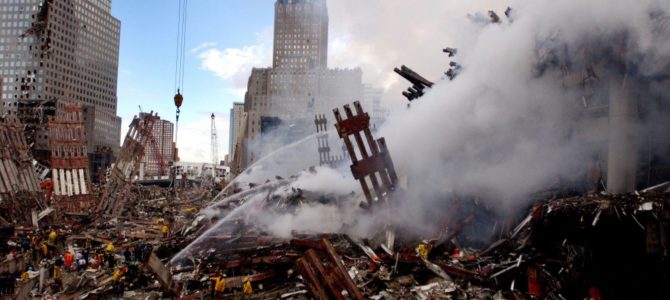
The 20th anniversary of 9/11 looms large in the wake of the catastrophe in Afghanistan. Much has changed in these past two decades. At the time, the Taliban were no more to us than a remote band of bearded fanatics in baggy shalwars and tunics.
Not any more. Enabled now by the feckless cruelty of a cretinous administration, the Taliban have triumphed over the United States. They did it as easily as if this nation were made of the same sandstone as the Bamiyan Buddhas they pulverized in March 2001.
Radical change occurred in the blink of an eye. Catapulted to global stature, the Taliban now have a defense minister. They are poised for access to the international monetary system. And you can follow them on Twitter.
One thing has not changed. Still intact but more anti-American than ever is the American education system. This is the behemoth that will school the children of the tens of thousands of largely unvetted Afghan nationals who filled flights out of Kabul.
Thought of that sent me hunting through notebooks and journals for comments jotted down about some of the events marking the ten-year anniversary of 9/11. One series of notes applies here. It was a log of observations made at the exhibition “9/11: Through Young Eyes” at Manhattan’s DC Moore Gallery in September 2011.
The exhibition was a collaborative series of 31 narrative collages by then-eighth graders at the progressive Calhoun School on New York’s Upper West Side. They were toddlers in 2001, too young for any recollections of their own. Their interpretation of the day was an exercise in political mythology that illustrated what they had been taught.
A quarter of the panels—a full eight—preened themselves on the sly implication that America is just one more rogue state. There were no references to al-Qaeda or enemy assault. Instead, cartoon Marines head to Afghanistan. Bombs drop on Afghanistan. A soldier lectures on “bad” Arabs. Americans start “using the flag as a symbol of war.”
One panel growled: “War was glorified and commercialized.” Such wording hardly came unprompted from the mouths of babes who seem never to have heard the word jihad. In context, the censure applied not to fanatics who shout “Allahu Akbar” in bloody ecstasy but to Americans.
That and similarly weighted captions sacrificed historical understanding to bien pensant avoidance of the obvious. Viewers were expected to applaud the program for its enlightened refusal to see evil anywhere but at home.
It was here in this country that “mosques were burned” and “Muslims were dehumanized.” And “some Arab-Americans were even murdered.” In a perverse inversion of selective sympathy, the tragic splendor of victimhood accrued to Muslims, not to annihilated New Yorkers.
Viewed through the unripe eyes of Calhoun’s 12- and 13-year-olds, the collapse of the Twin Towers might have been a natural disaster. Captions told us that “The loss was sudden and great” and “Smoke and dust were everywhere.” True, but what caused it?
Not a single image hinted that it came from burning skyscrapers in which some 3,000 civilians were slaughtered. What was the instrument of this mass murder? Calhoun students noticed American military fighter jets flying over the city but missed the two commercial jets hijacked by Koran-inspired assassins.
True to form, any image of the Koran went missing as well. “The streets were empty.” Nothing indicated why. “People donated blood.” Ah, but blood drives are commonplace. What distinguished this one from others? “People were afraid.” But of what?
Yes, “people still miss the Twin Towers.” But why are they gone? Did they just fall down of their own accord? Might their destruction have had something to do with the lethal ideology of Islamist jihadists? With the same people who had blown up the Bamiyan Buddhas, sixth-century relics of Afghanistan’s pre-Islamic history, just six months earlier? Did Islam’s theological impulse toward war with the infidel—that’s you, children—have any bearing on the subject of this commemorative art project? The display kept mum.
Right-thinking—not art, not history—was the point of the project and its exhibition. Collage provided a pretext for commentary that epitomized the distance between political posture and observable reality. The eighth graders were not to blame. Their grasp of 9/11 came filtered through the sanctimony of their elders and edited to the point of mendacity.
Childhood innocence is a powerful political tool. By now those youngsters are grown up. They have graduated from college, entered professions, begun corporate careers, and become voters. Some are teachers. They bring with them into adult life the attitudes they have been carefully taught.
There is more than a single cause for the ruin of a nation. Still, historical ignorance and its harvest of disbelief in the rightness of this country—generated in classrooms—is a powerful destroyer.









